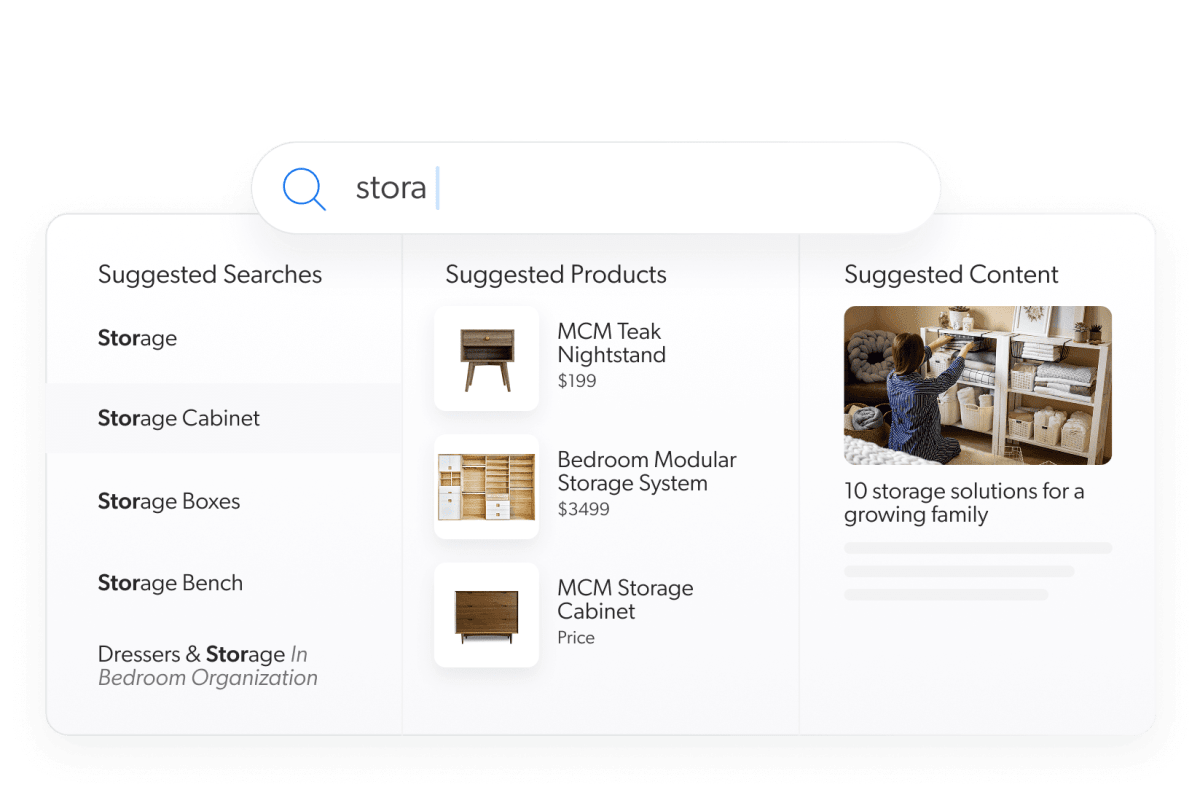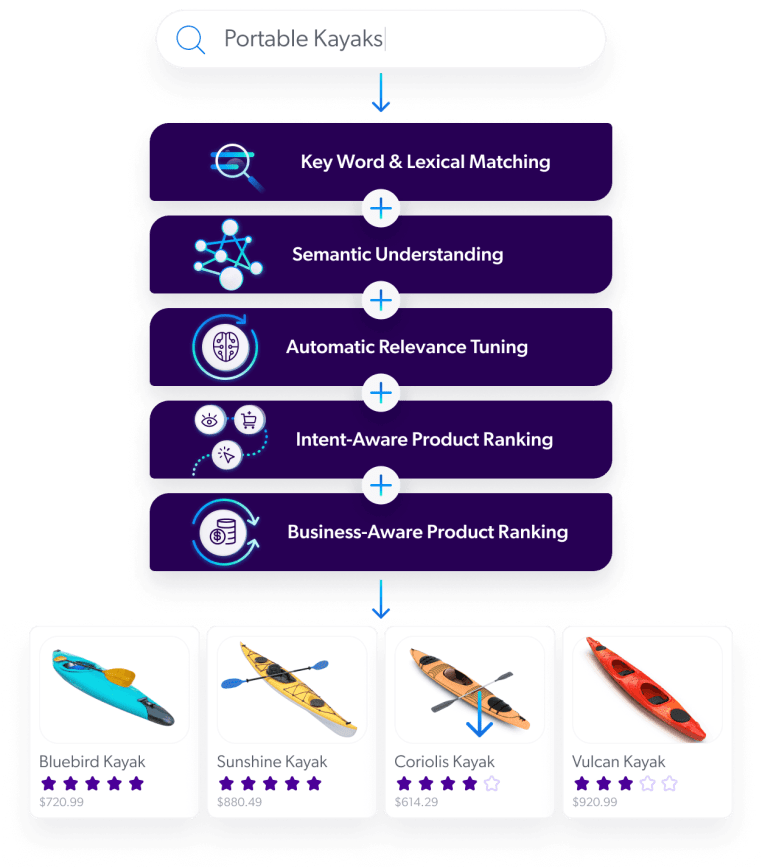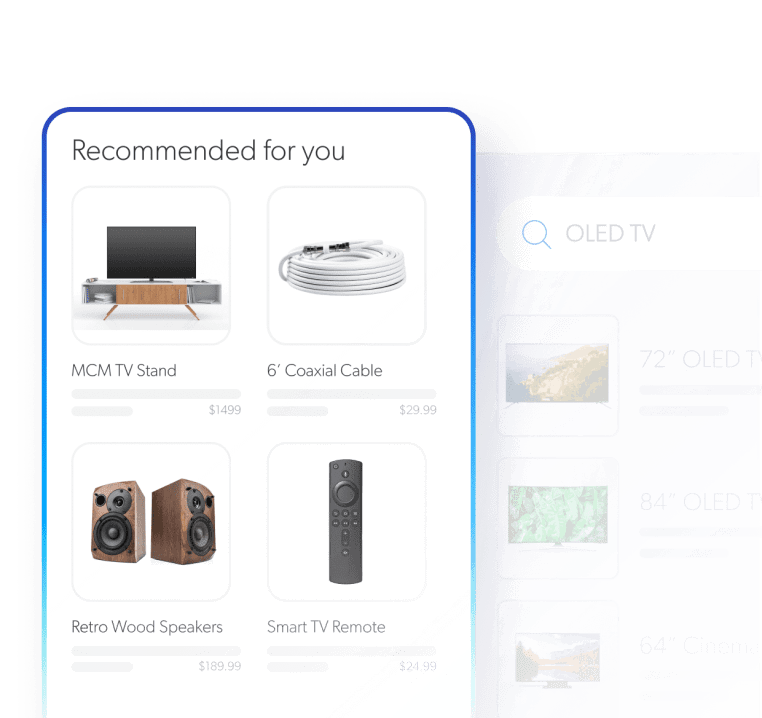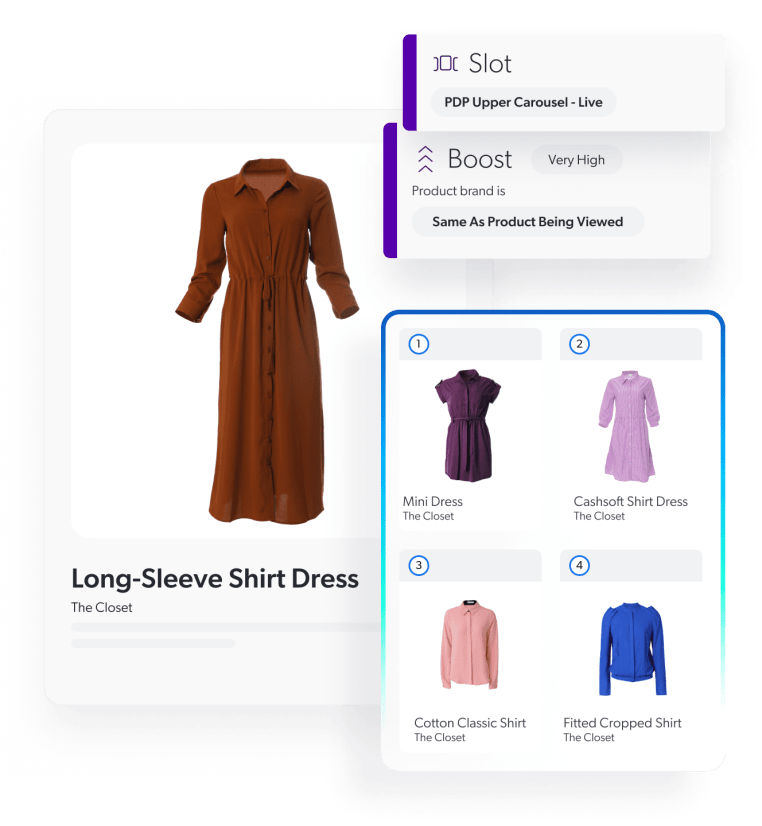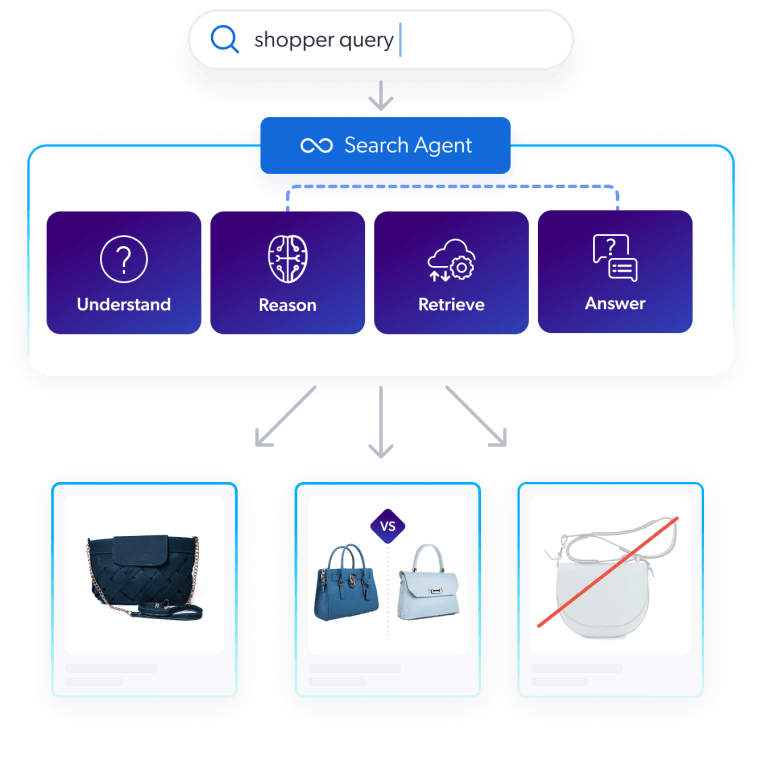Product search is about finding something specific. Shoppers type a query like “running shoes” or “black dress pants” into a search box, expecting fast, accurate results. Traditional search focuses on retrieving what was explicitly asked for, ideally with support for typos, synonyms, and filters.
Product discovery, on the other hand, is about helping shoppers find what they didn’t know to look for. It uses AI-powered recommendations, behavioral signals, and contextual cues to surface products that align with a shopper’s needs, even if they never searched for them directly.
While product search helps people find what they want, product discovery helps them uncover what they might want — increasing engagement, average order value, and unplanned purchases.
In a modern ecommerce experience, search and discovery are essential functions that work together. Search supports efficiency; discovery supports growth. When integrated effectively, they reduce friction, improve findability, and increase revenue.

